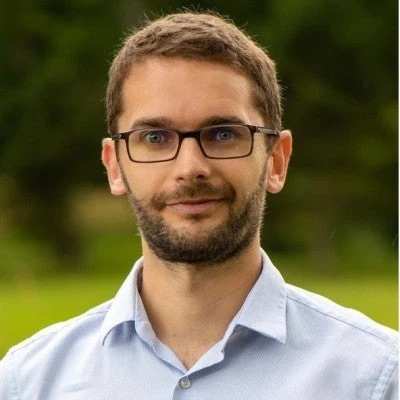 Ninety percent of electric vehicles in the world are two and three-wheelers | Image: Unsplash, John Onaeko
Ninety percent of electric vehicles in the world are two and three-wheelers | Image: Unsplash, John Onaeko
Did you know that 90 percent of electric vehicles that are currently operating around the world are two- and three-wheelers (2&3W)? And that 20 percent of the world’s 2&3W are electric? Although most electric 2&3W today are concentrated in Asia, these vehicles are expected to grab a significant portion of the Africa transport market over the next few years. To understand the impact of this transition and address the potential challenges, our team took a close look at the electrification of two- and three-wheelers in the Sahel, with a particular focus on Bamako (Mali) and Ouagadougou (Burkina Faso). Here’s what we learned.
Why focus on two and three-wheelers?
In the cities of the Sahel and across Africa, the eMobility transition will likely start with small vehicles such as 2&3W. There are multiple reasons for that. First, small vehicles like two-wheelers are already the dominant mode of transport in many Sahelian cities and trends show that they will continue growing. Today, 2&3Ws account for three out of four vehicles in Ouagadougou and two out of three vehicles in Bamako. Second, smaller vehicles are obviously cheaper to purchase, making them more appealing to low-income residents with limited financing options. Finally, most two-wheelers can be easily recharged in a few hours via a standard plug at home or at a commercial location, which means that, unlike electric cars or buses, they do not require the deployment of extensive charging infrastructure to become a viable transport option.
Are electric two and three-wheelers really better for climate and the environment?
Yes. Electric 2&3W offer a tremendous opportunity to tackle CO2 emissions and air pollution in Sahelian cities. Today, 2&3W that run on an internal combustion engine contribute to more than 50 percent of total CO2 vehicle emissions and 60-75 percent of harmful air pollutants emitted by vehicles in Ouagadougou and Bamako. In 2016, ambient (outdoor) air pollution was responsible for the loss of 357,039 years of ‘healthy’ life in Burkina Faso and another 396,308 and years of ‘healthy’ life in Mali.
[In current conditions?] The transition from ICE to electric 2&3W in Sahelian cities could reduce CO2 equivalent emissions per km by around 30 percent over the life cycle of a motorcycle, and around 50 percent for a scooter. These environmental gains will be even higher as the electricity mix gets greener, which Mali and Burkina Faso have been actively pushing for. This is especially relevant for Ouagadougou, where renewable sources account for only 17 percent of total electricity production right now, compared to 47 percent in Mali.
To make this transition as green as possible, it is important that Sahelian countries develop programs to dispose of and recycle batteries appropriately. This is mainly because the batteries of electric vehicles contain a number of different metals that require a more complicated recycling process.
Last but not least, while the transition to electric 2&3W will play an important role in reducing transport emissions, it cannot be the only answer to the urban mobility challenges facing the region. In order to achieve make their entire transport system greener, safer, more efficient and inclusive, it is important that Sahelian cities create attractive public transport networks (including through the professionalization of informal transport operators), foster better integration of land-use and transport, promote the introduction of cleaner vehicles and fuels (not only electric), and develop stronger urban mobility institutions, among others.
What about the business case?
Yes, there is a clear business case for the transition of electric two and three-wheelers today if we take into account the total long-term cost. If we compare the total cost of ownership (that includes purchase, operation, and maintenance of vehicles over their lifetime), we observe that, even today, electric 2&3W offer either similar or better value in the long run compared to ICE 2&3W in Bamako and Ouagadougou. Importantly, electric 2&3W are expected to become more and more competitive in the coming years.
Unfortunately, the higher purchase price of these vehicles is a significant deterrent — especially in a context where few consumers have access to financing — and remains the main obstacle to the large-scale adoption of electrical 2&3W in the Sahel.
To address this, exploring new financing solutions and business models will be key, including by developing subscription or rental options for vehicles and batteries. Vehicle leasing could be particularly promising in Bamako and Ouagadougou, as it would help familiarize riders with electric 2&3W and alleviate negative perceptions related to their range and reliability. Green financing options should be also explored. Finally, the expected reduction in the purchase cost of batteries in the coming years will make electric 2&3W more affordable.
Is the electricity grid ready?
Sahelian countries are working hard to increase electricity production. However, under existing energy conditions, if 70 percent of the current 2&3W fleet was converted to electric, it would consume 19.5 percent of the total electricity production in Mali and 82 percent in Burkina Faso. This shows that cities in the Sahel are not prepared for a big-bang transition to electric vehicles. Instead, the eMobility transition needs to happen gradually, and calls for a sustained effort to increase energy production, enhance the reliability of the grid, and green the energy supply matrix.
Want to learn more? Take a look at our latest report, Pathways to Electric Mobility in the Sahel: Two- and Three-Wheelers in Bamako and Ouagadougou.





Join the Conversation